DATA INFORMED STRUCTURES // N.E.S.T 2.0
RECIPROCAL ARRAY
This project is an adaptation of the NEST 1.0 previously designed at IAAC, focusing primarily on simplification of the overall structure and construction process. The structure, skin and spatial organization are built upon and optimized using analysis tools such as Karamba 3d and Ladybug. The proposed alternative has developments based on environmental analysis, fabrication protocols, joinery details and assembly sequence of the structure.
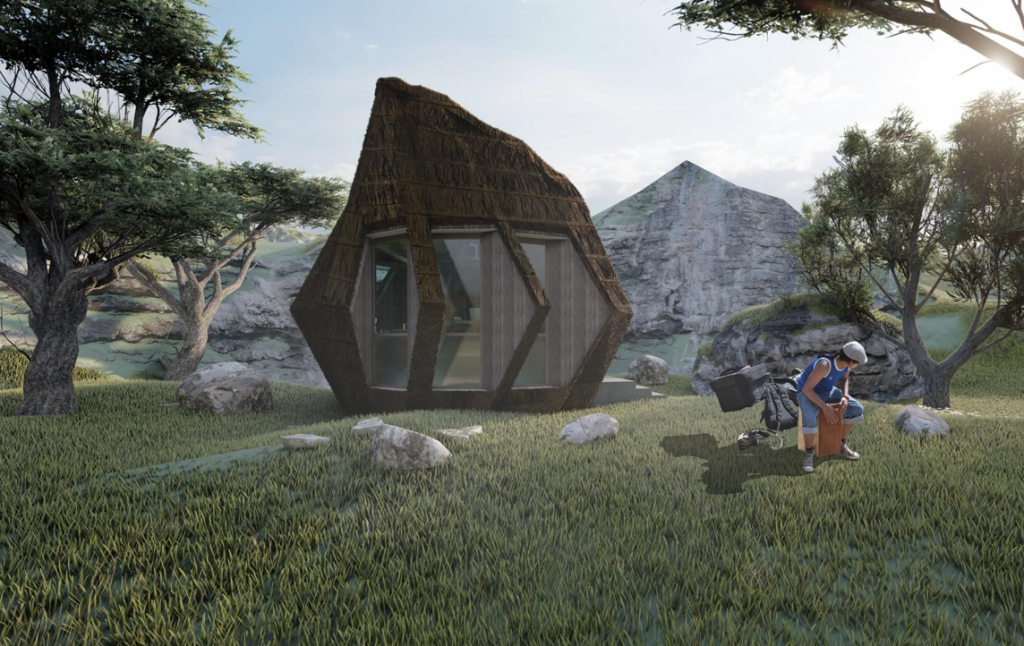
DESIGN DEVELOPMENTS // COMPARISON
The changes in design include
- Arrayed and rotated arrangement of ribs
- Triangulation in the structure of ribs
- Pinned connections for the ribs
- Use of structural panels for load transfer and lateral bracing
- Triangulation for support of skin
- Double skin design comprising of plywood, linen and palm leaves to resist the external forces and provide interior comfort.
- Reciprocal array of floor beams
- The oculus is split into multiple smaller sections to reduce the span of glass to be inserted thereby reducing the thickness and weight.
- Simplifying the design to make use of maximum space inside and usability.
- Rotated reciprocal structure provides required support during assembly
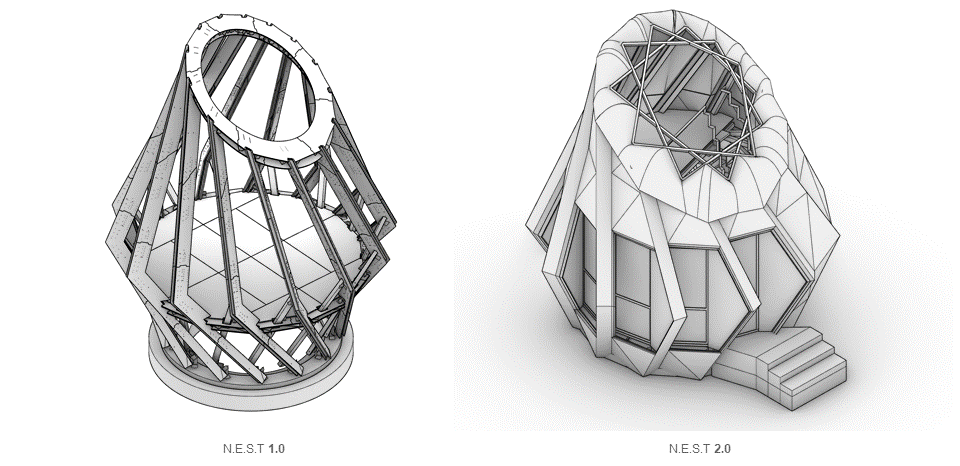
The new system is rotated rather than twisted. The number of ribs is reduced from 14 to 12, allowing for a reciprocal beams structure connecting every 4th rib, while being at 90 degrees. The joints are now either parallel or perpendicular, eliminated odd angles joinery.
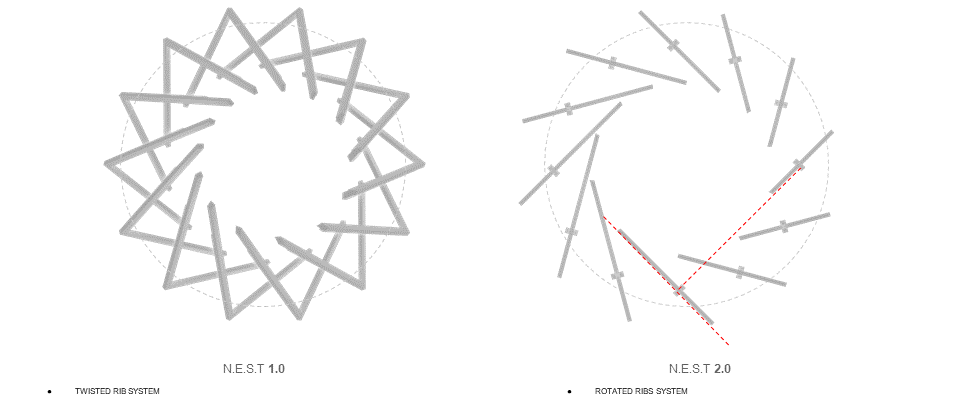
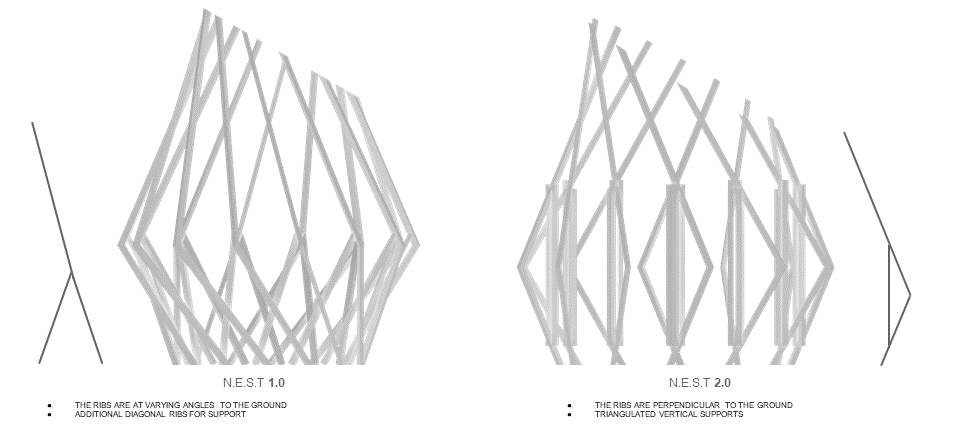
ENVIRONMENTAL ANALYSIS // ORIENTATION AND RADIATION OPTIMIZATION
The N.E.S.T 2.0 is designed for the climate of Barcelona. Barcelona has a Mediterranean climate, with mild winters and hot summers. It has a warm-temperate subtropical climate. The Atlantic lows often arrive in Barcelona with low humidity, producing little or no rain. The proximity to the Mediterranean Sea and the relief are why the summers are not as dry as other locations in the Mediterranean Basin
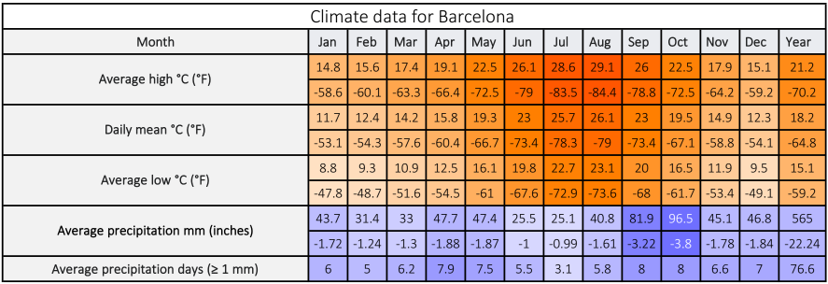
The orientation is optimized on the basis of daylight hours and radiation analysis
Optimization Goal Maximum daylight hours for minimum radiation gain throughout the year.
Parameters to optimize
- Orientation of the oculus of the NEST 2.0
- Position of the openings for windows.
OPTIMIZATION CATALOGUE
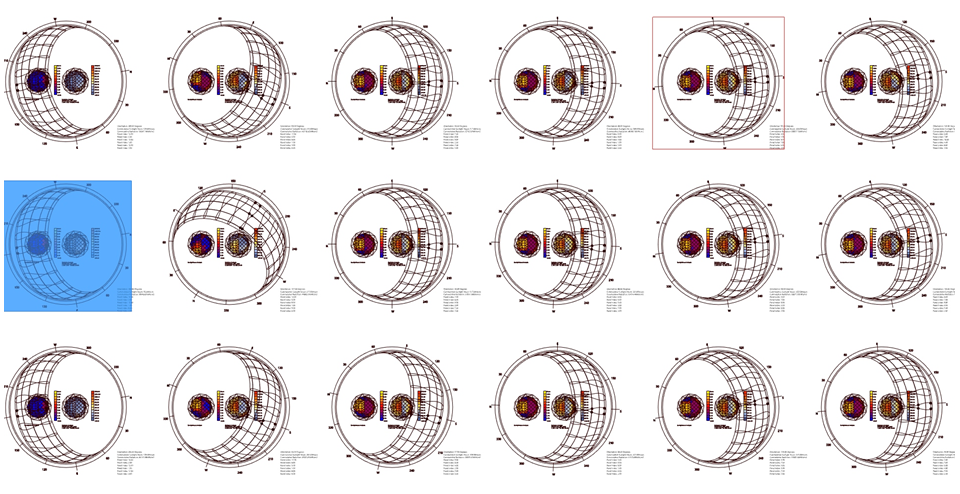
SUNLIGHT HOURS ANALYSIS AND RADIATION ANALYSIS
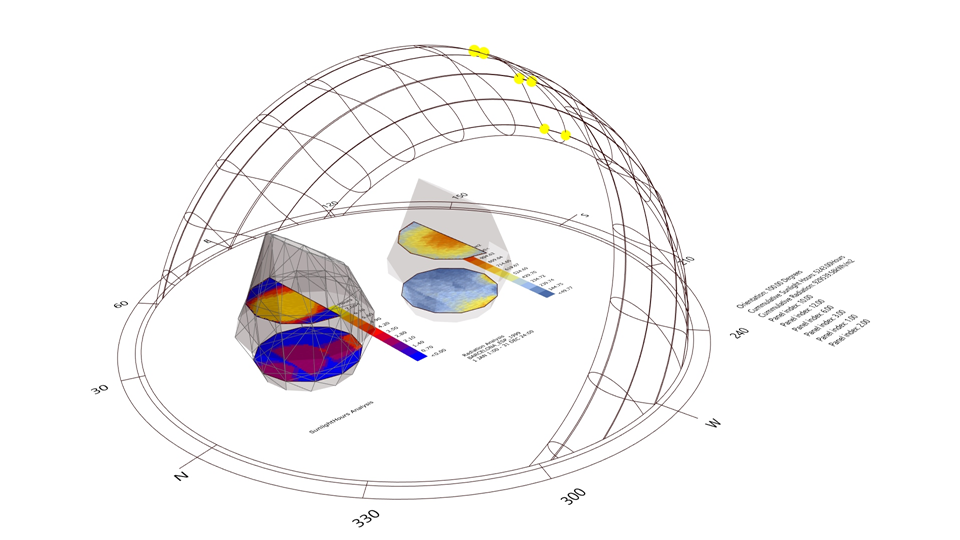
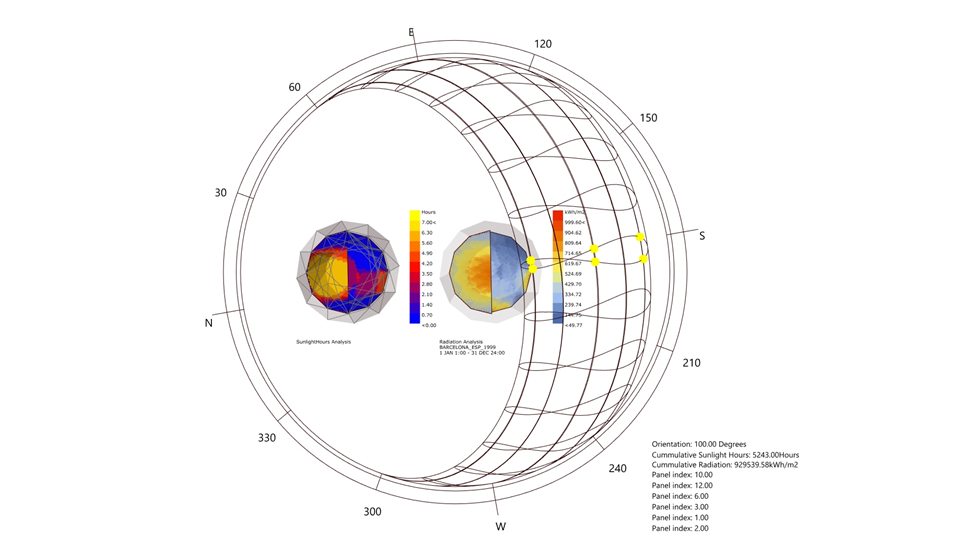
ENVIRONMENTAL ANALYSIS CONCLUSION :
The analysis period : Data recorded for Barcelona at 1pm of 21st of each month for 12 months
Orientation: 100.00° rotated from the north
- Cumulative Sunlight Hours: 5243.00 Hours for the analysis period
- Cumulative Radiation: 929539.58 kWh/m2 for the analysis period
- Panel index: 1, 2, 3 ,6, 10, 12
STRUCTURAL ANALYSIS (KARAMBA) // RIBS AND SHELL ANALYSIS
Ribs Analysis // Self load
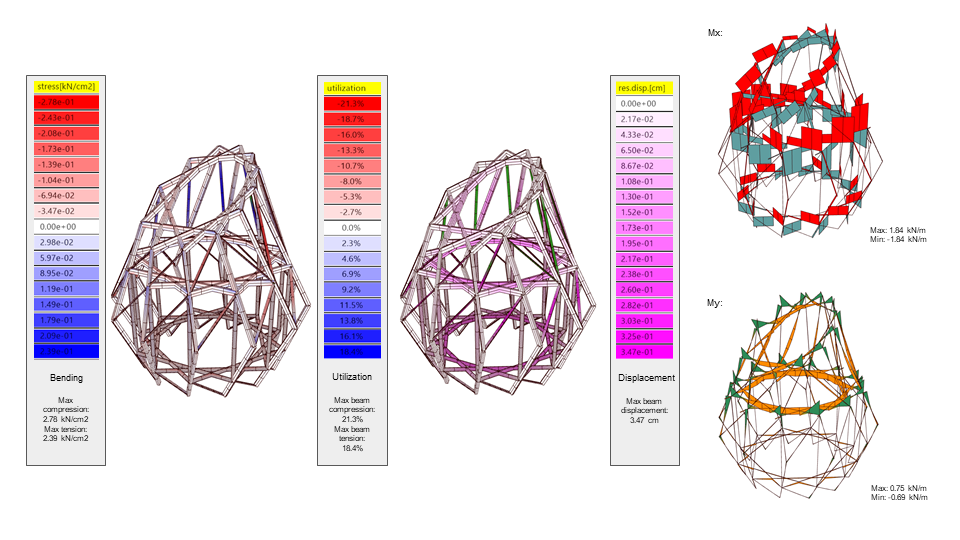
Ribs Analysis // Self load + lateral load

Ribs + Shells Analysis // Self load
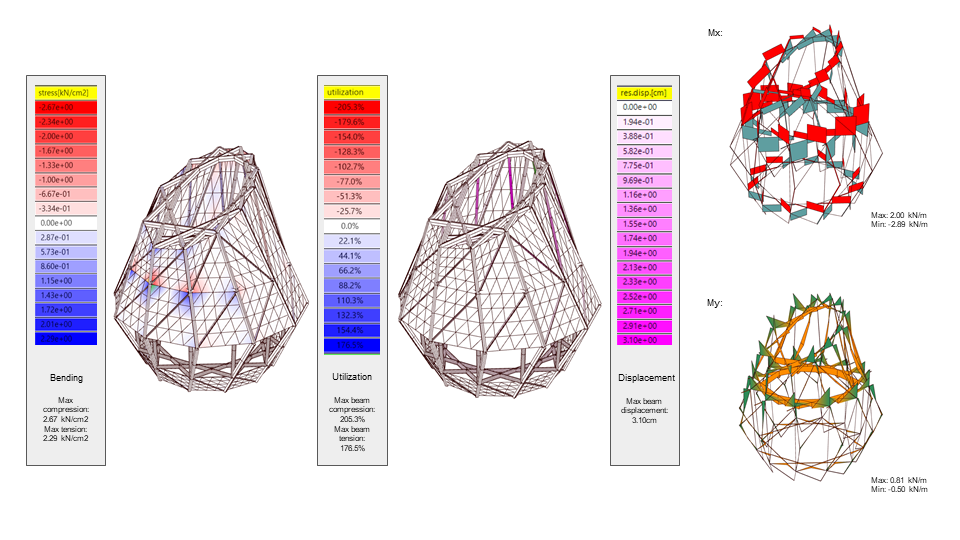
Ribs + Shells Analysis // Self load + Lateral load
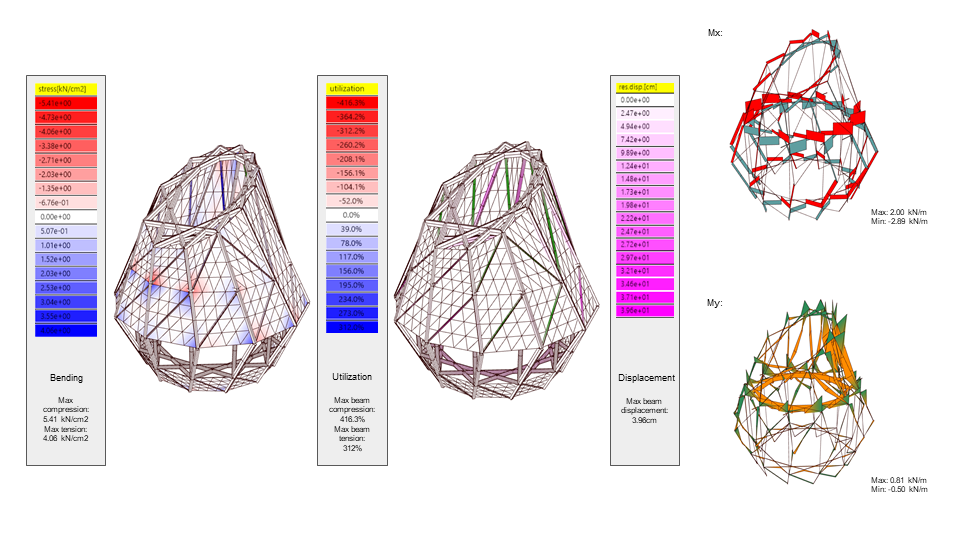
Shells optimization // Self load + Lateral load
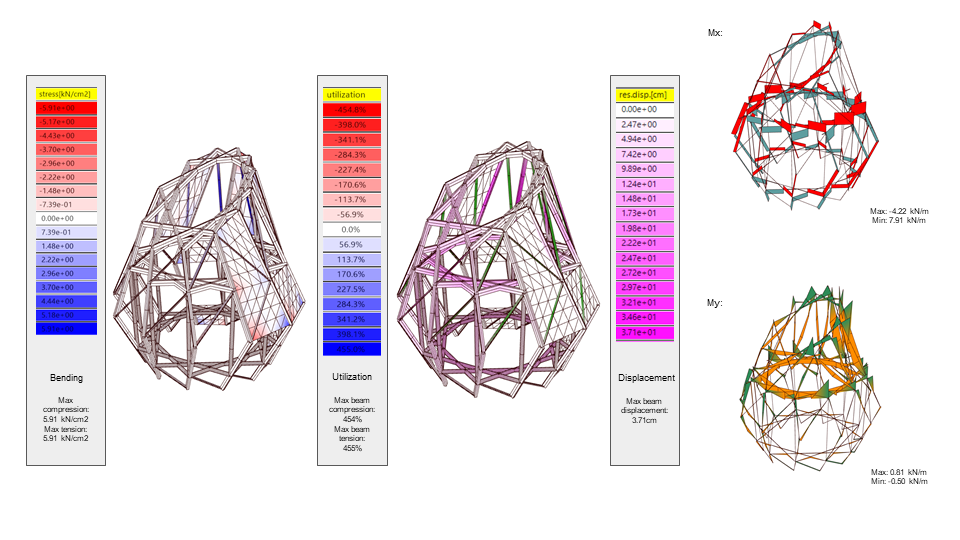
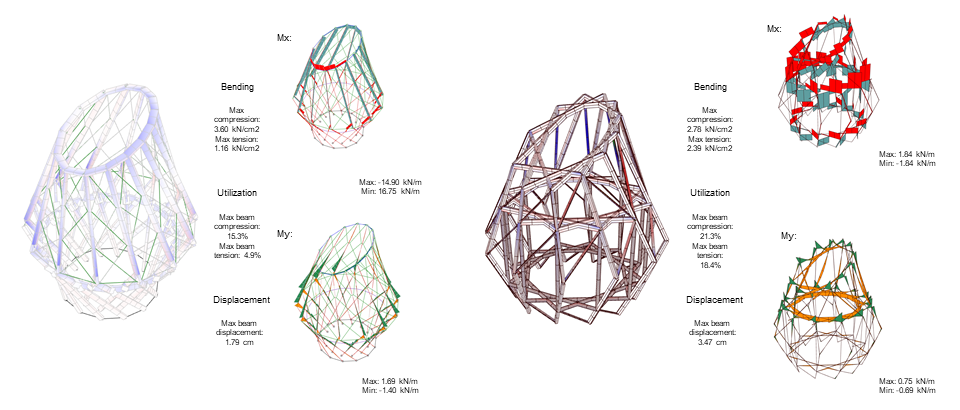
DETAILS // MATERIALITY AND CONSTRUCTION
SKIN DETAIL
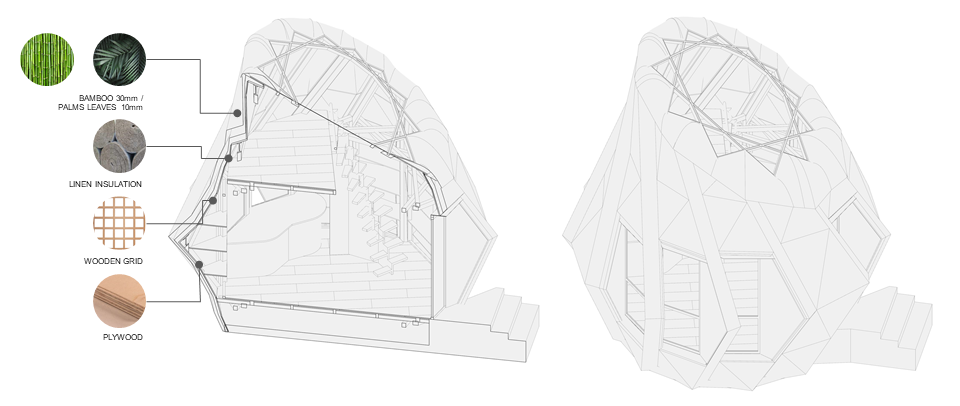
WINDOW SECTION DETAIL
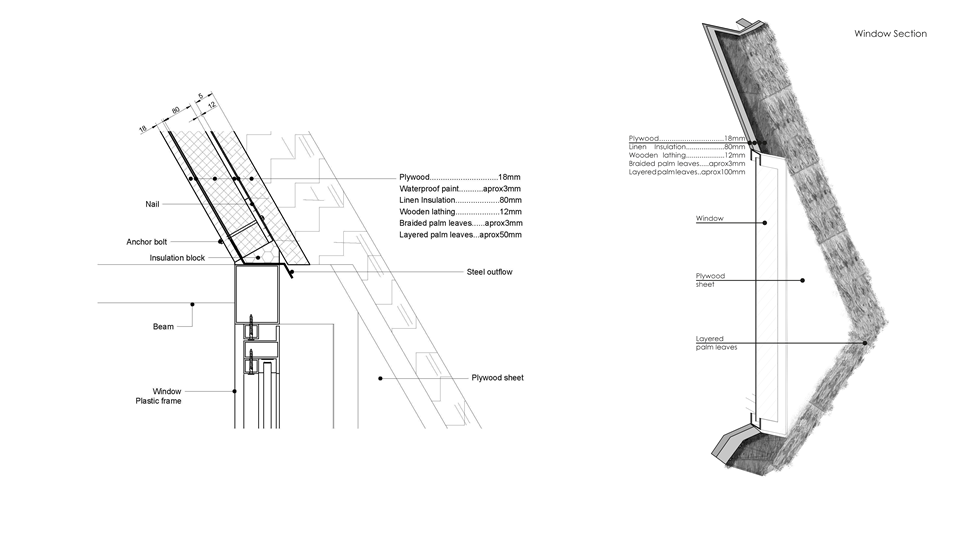
WALL SECTION DETAIL
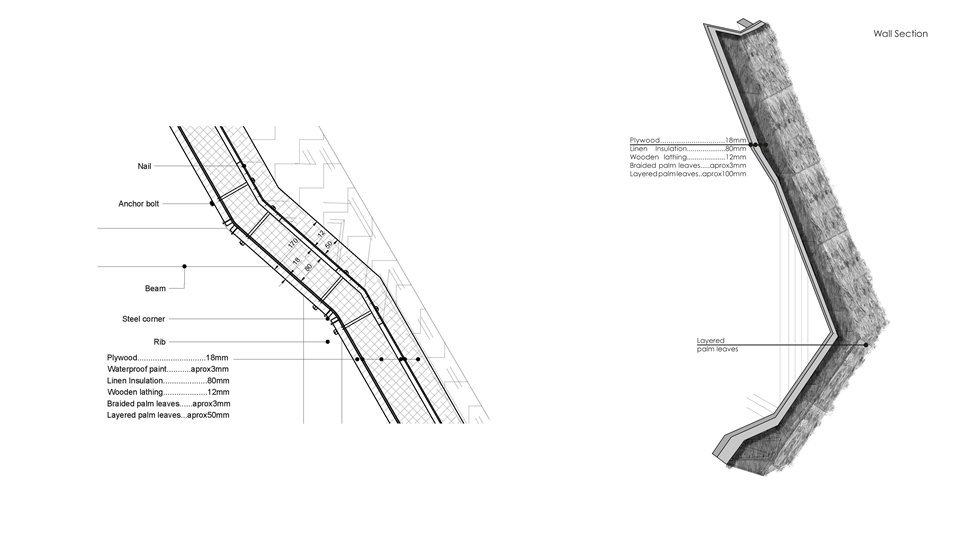
OCULUS SECTION DETAIL
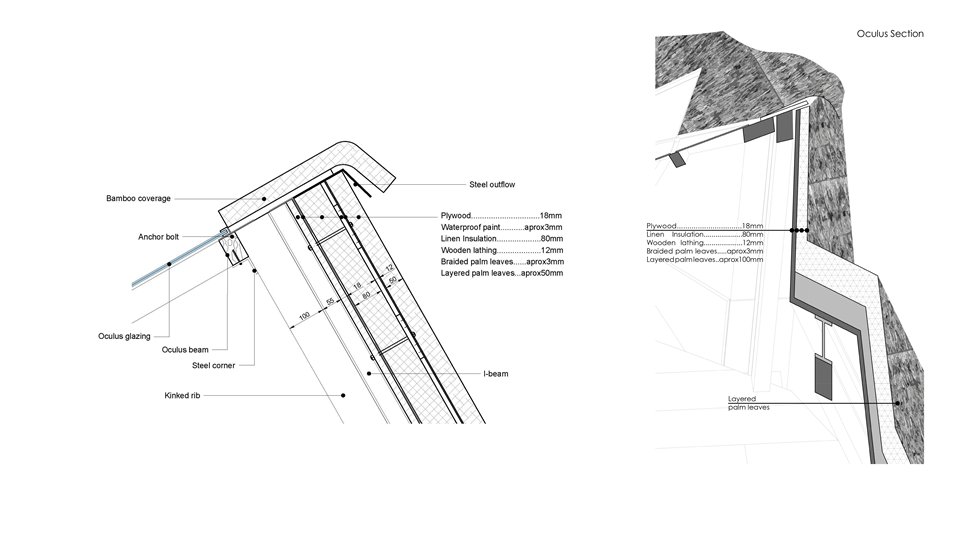
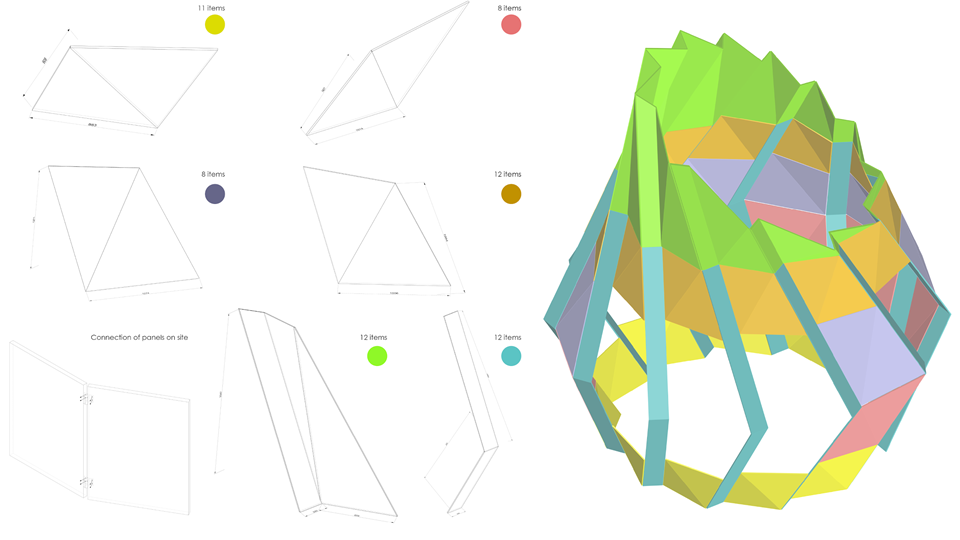
CONSTRUCTION DETAILS // RIBS, AND PANEL CONNECTIONS
RECIPROCAL FLOOR DETAIL
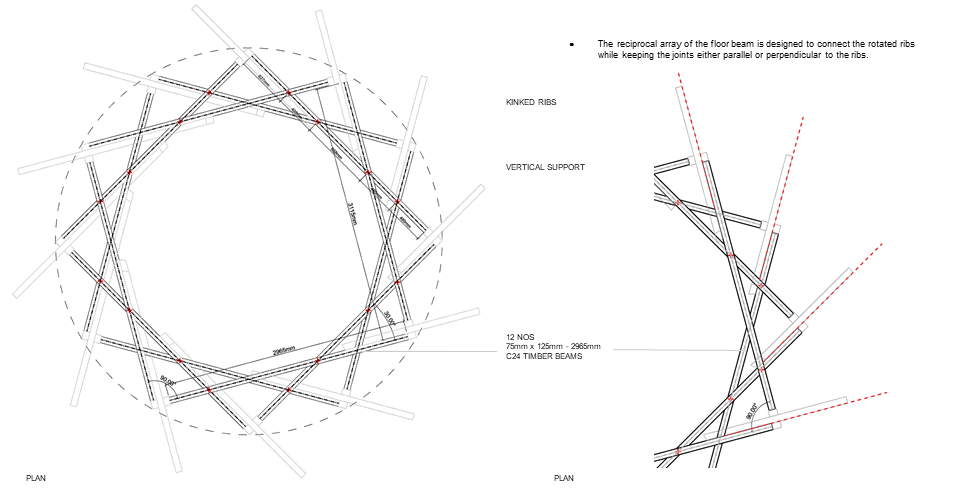
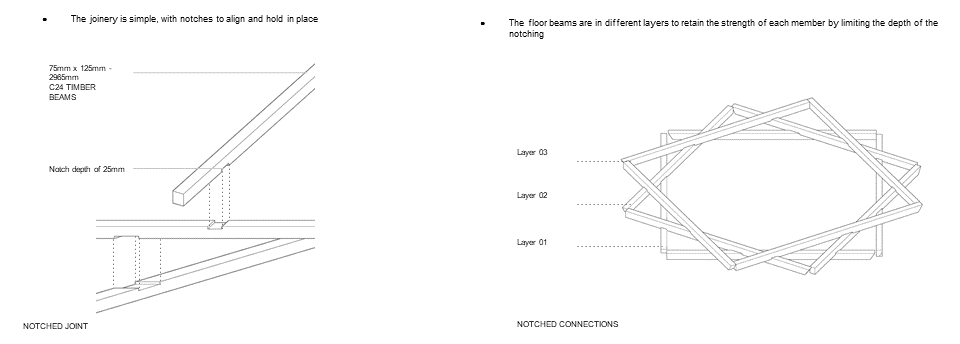
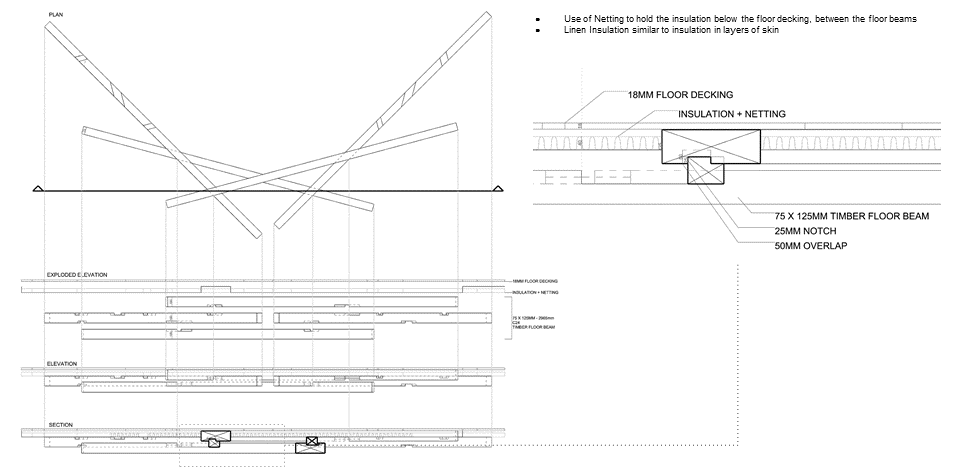
FABRICATION IMPACTS
- Prefabricated notches in floor beams
- Each floor beam is around 3000 mm in length with cross sections varying from 75 x 125mm for beams (for additional floor joists)
- Notched joints between beams could be attached by glue or with bolts (depending on load capacities)
TRIANGULATED RIB DETAIL
CONNECTION A
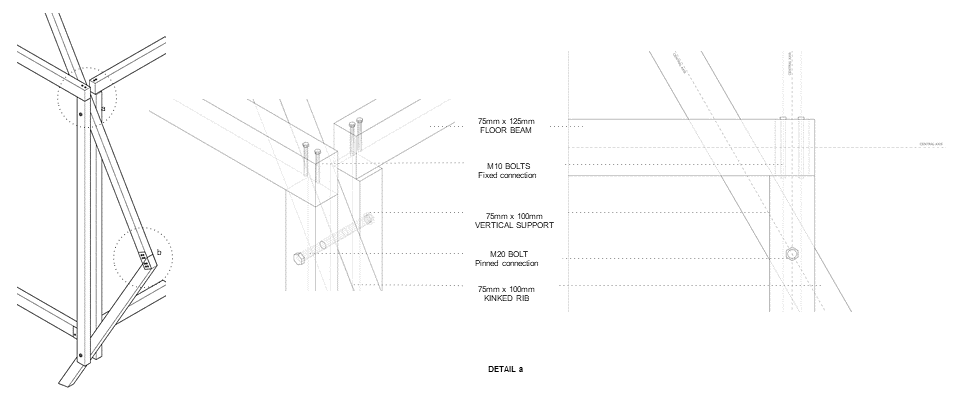
VERTICAL LOAD TRANSFER DIAGRAM
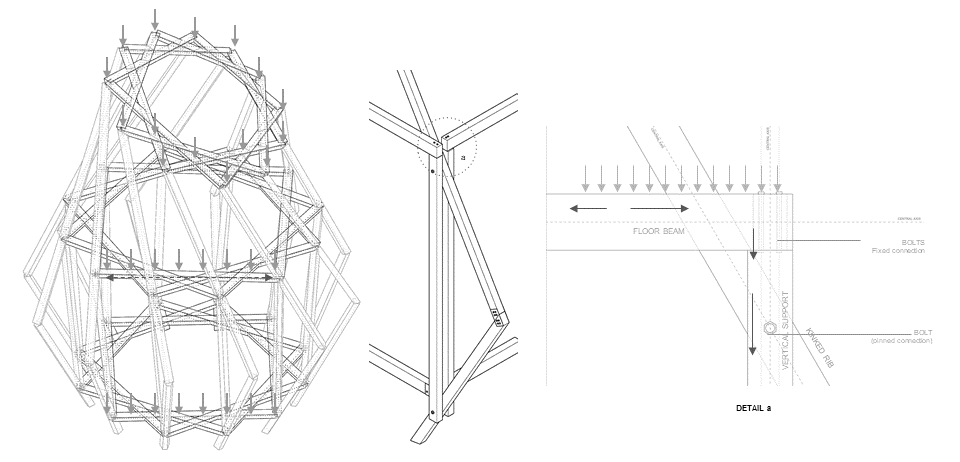
CONNECTION B
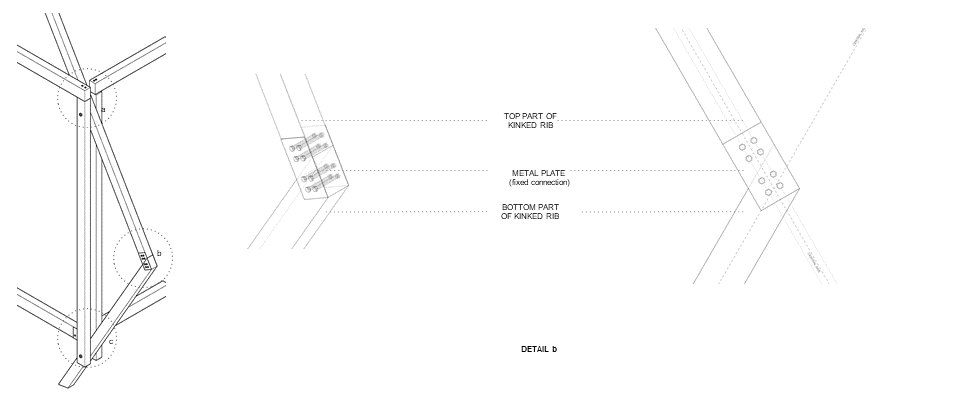
LATERAL LOAD TRANSFER DIAGRAM
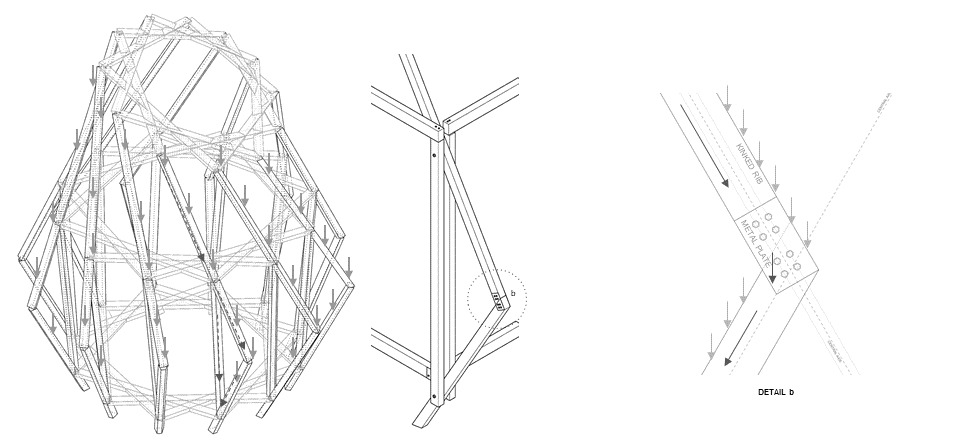
CONNECTION C
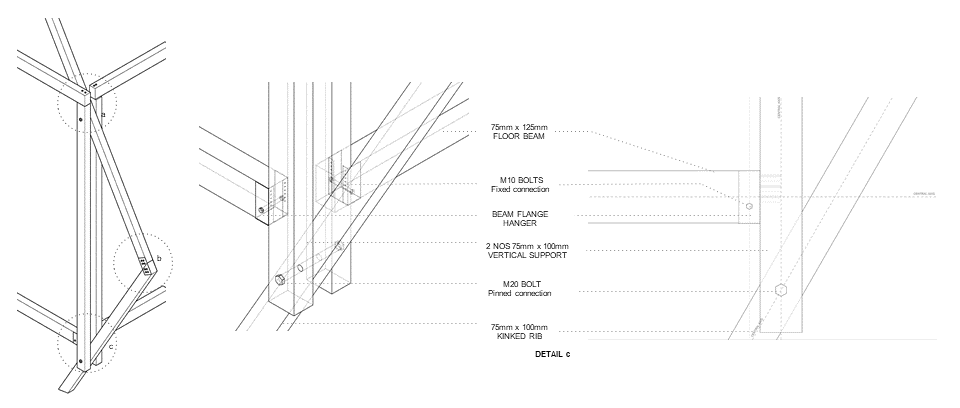
FABRICATION // CONSTRUCTION AND ASSEMBLY
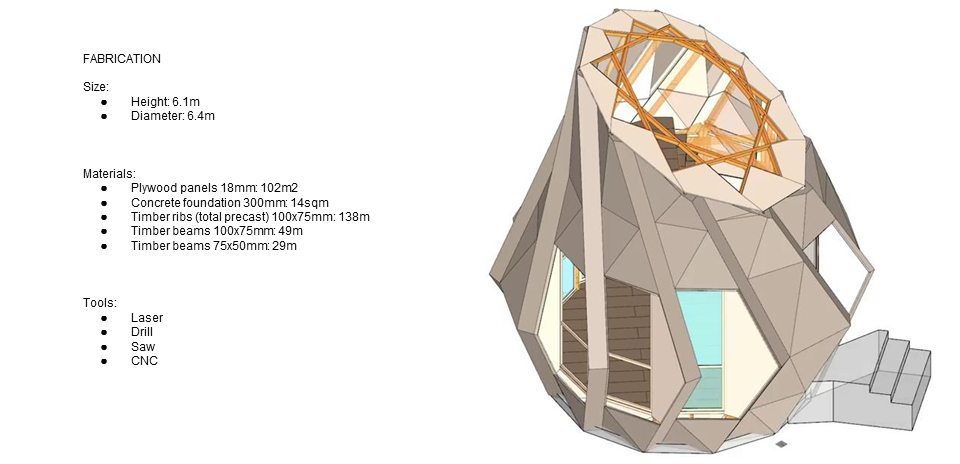
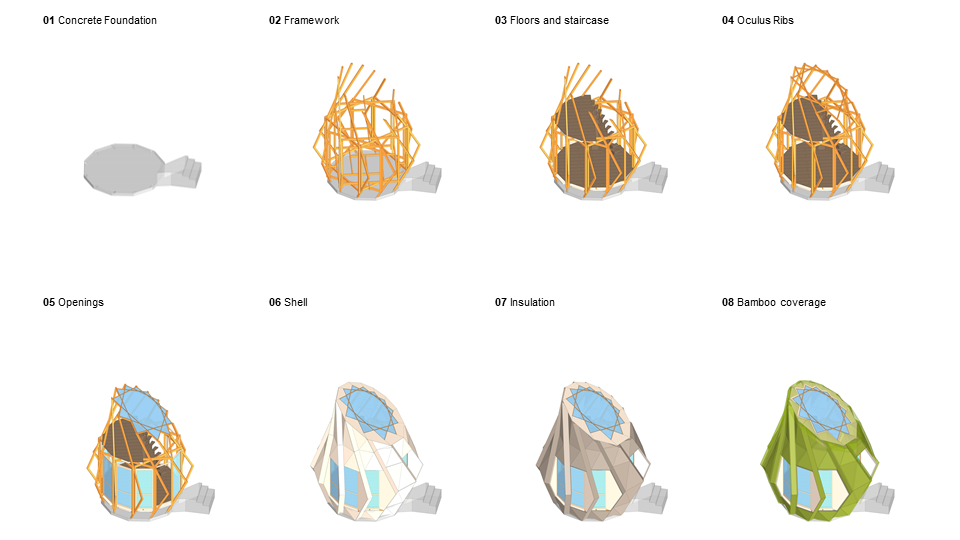
ASSEMBLY SEQUENCE
VISUALIZATION// RENDERS
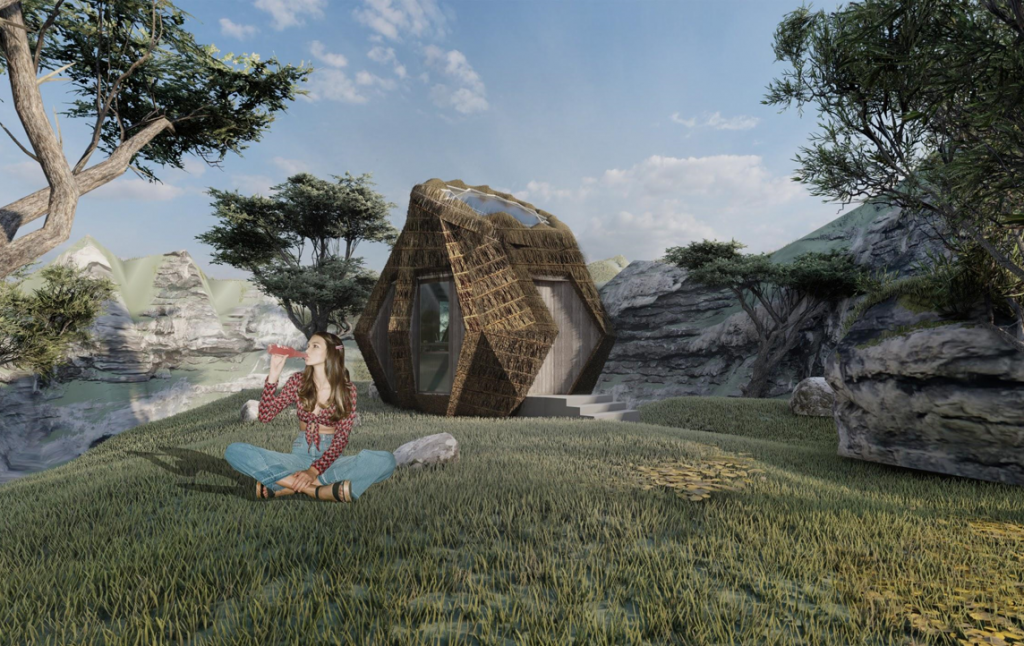
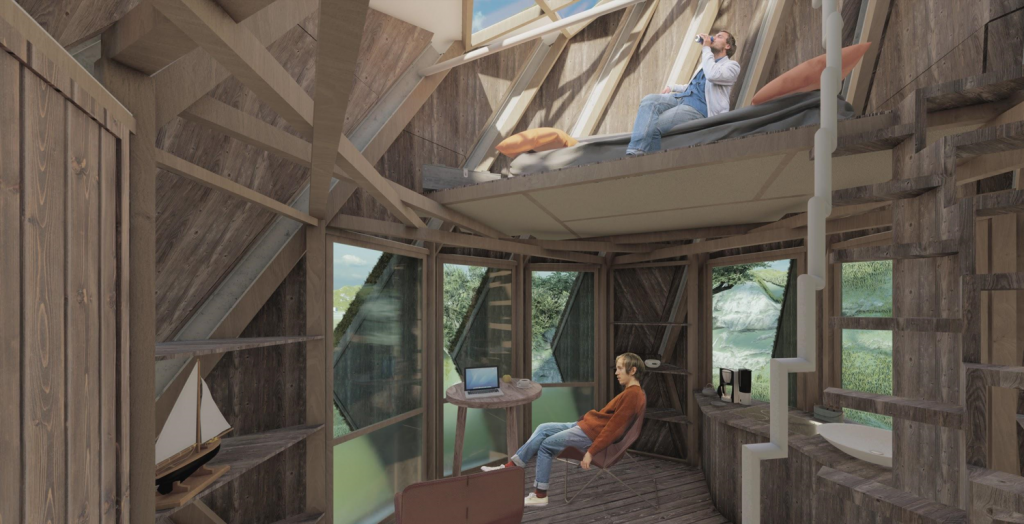
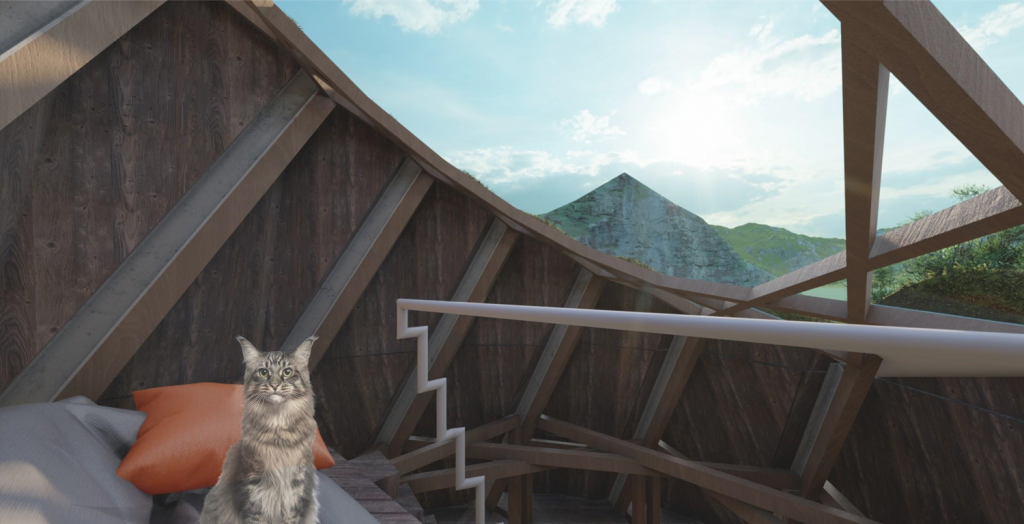
N.E.S.T 2.0 – Reciprocal Array is a project of IAAC, Institute for Advanced Architecture of Catalonia developed in the Master of Advanced Architecture 2019/20 by Students: Aditya Ambare, Alisa Iureva, Michel L’Eglise Quintana, Poojitha Tadshina Reddy and Faculty: Manja Van de Worp, Raimund Krenmueller